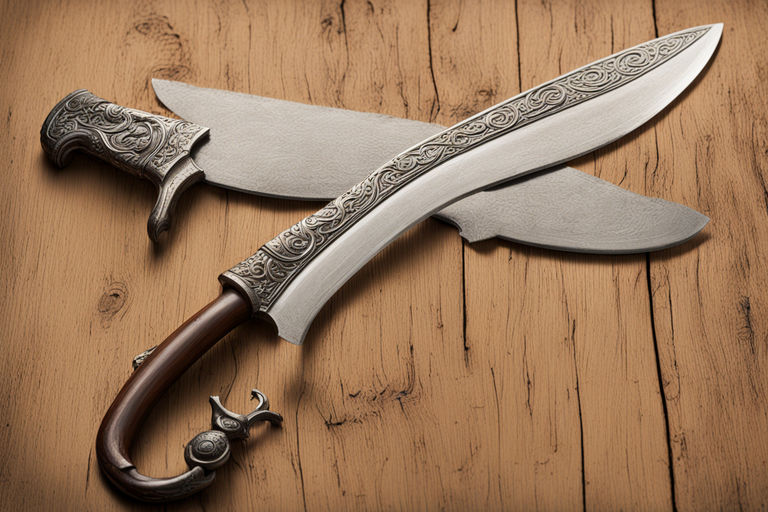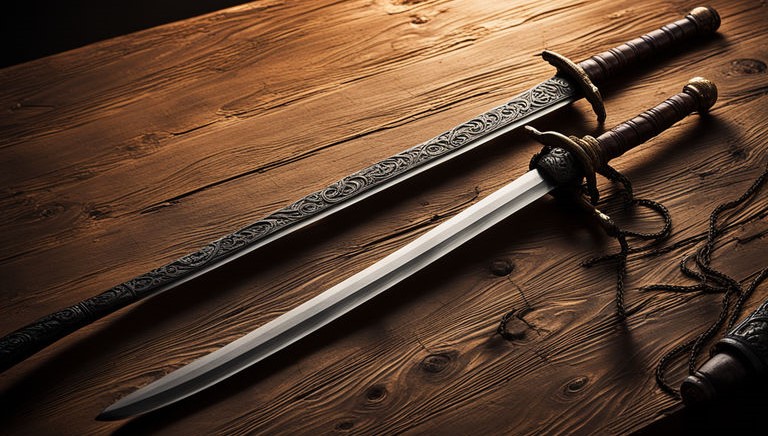A katana is a traditional Japanese sword with a curved blade, usually used by samurai warriors. It’s believed that swordsmiths in eighth-century Japan crafted the first katana, aiming to create blades sharper than others of the time.
These swords’ blades are crafted from folded steel, resulting in a remarkably robust blade capable of withstanding hits without breaking or bending. Each katana has a handle wrapped in silk cord and protected by a wooden sheath called a “scabbard.” Depending on the fighting style you choose to use, katanas come in different lengths. Shorter ones are better for close-up fights, while longer ones give you more reach when striking from a distance!
Katanas have become famous for their ability to slice through various materials, including bone. However, it’s important to understand that a katana’s ability to slice through bone depends on several factors, such as the quality of the blade, the technique used, and the specific type of bone.
A well-made and well-maintained katana can be very sharp and capable of causing severe cuts. The blade’s ability to cut is influenced by its edge shape, including sharpness and design. With precise technique, a katana may cut through bone effectively, especially if it’s thin or with enough force.

Another special feature of swords is their weight and balance. The katana is a relatively light sword, with the typical blade weighing around 2.5 pounds. This means that it’s easy to use and move in battle, making it an ideal weapon for close-quarters fighting. The balance of the blade is also important, with the center of gravity found just above the guard. This design allows for maximum control and accuracy in battle.
- Quality of the Blade: A katana’s cutting ability depends on the steel’s purity and the skill of its making. High-quality steel, properly made and tempered, ensures strength and edge retention, enhancing its bone-cutting ability.
- Sword Technique: Proper swinging technique is crucial for maximizing a katana’s cutting power. Focusing force at the point of impact and using the sword’s curved edge effectively increases cutting efficiency.
- Type of Bone: Different bones vary in hardness, affecting a katana’s cutting effectiveness. Katanas slice through softer bones like the collarbone or ribs better than harder bones like the femur.
- Not Built for Bone-Cutting: Katanas are primarily made for slicing and disarming opponents rather than chopping through hard bone. While they’re good at cutting flesh and softer materials, their design and edge shape are not optimized for heavy bone chopping.
- Risk of Damage to the Blade: Trying to cut through very hard bone poses a significant risk of damaging the katana’s edge or potentially causing cracks in the blade. The delicate balance between hardness and flexibility in a katana’s construction makes it vulnerable to such stresses.

In stories, katanas often easily slice through bone for dramatic effect in movies and games. However, this portrayal exaggerates the sword’s abilities for dramatic purposes, straying from historical accuracy.
Taking everything into account, katanas have impressive abilities to cut, thanks to their excellent making, unique design, and historical importance. While they potentially slice through bone, various factors affect this ability, including blade quality, technique, and bone hardness. Understanding that katanas are mainly made for slicing and disarming opponents rather than chopping through hard bone is important. Trying to use a katana for bone-cutting purposes carries the risk of damaging the blade, undermining its effectiveness in battle.
Despite their limitations, katanas remain iconic symbols of Japanese martial prowess and making. Their historical use by samurai warriors and their enduring presence in popular culture validate their enduring legacy as both weapons of war and objects of interest.
As a final note, it’s worth mentioning that making a katana is a centuries-old art form, with each sword bearing the mark of its maker’s skill and dedication.





